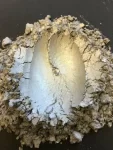Ultrafast preparation of nanocrystalline graphene films by quenching method
Graphene, a two-dimensional carbon allotrope with extraordinary electrical, thermal, and mechanical properties, has attracted immense interest in various fields including electronics, energy storage, and biomedical applications. The unique properties of graphene can be further enhanced by modifying its structure, such as by creating nanocrystalline graphene films. In this article, we will explore the ultrafast preparation of nanocrystalline graphene films using the quenching method.
The quenching method involves rapid cooling of a material from a high temperature to room temperature, resulting in the formation of a metastable state. This technique has been widely used in materials science to achieve unique microstructures and properties. Recently, researchers have successfully applied the quenching method to prepare nanocrystalline graphene films with improved performance compared to traditional methods.
The ultrafast preparation of nanocrystalline graphene films using the quenching method begins with the synthesis of graphene oxide (GO) through the oxidation of graphite. GO is then dispersed in a suitable solvent to form a stable suspension. The suspension is subsequently subjected to a high-temperature treatment to reduce GO to graphene while promoting the growth of graphene nanocrystals.
After the reduction process, the suspension is rapidly cooled using the quenching method. This rapid cooling induces a rapid transformation of the graphene nanocrystals, leading to the formation of highly crystalline graphene films. The quenching process prevents the growth and agglomeration of graphene nanocrystals, resulting in a uniform distribution of nanocrystals within the film.
The nanocrystalline graphene films prepared by the quenching method exhibit several remarkable properties. Firstly, the films possess a high degree of crystallinity, characterized by well-defined graphene lattice structures. This high degree of crystallinity contributes to enhanced electrical conductivity and mechanical strength.
Secondly, the nanocrystalline graphene films exhibit a large specific surface area due to the presence of abundant nanocrystals. This large specific surface area provides a large number of active sites for various applications, such as catalysis and energy storage.
Thirdly, the quenching method enables the control of the size and distribution of graphene nanocrystals within the film. By adjusting the quenching parameters, researchers can tailor the properties of the nanocrystalline graphene films for specific applications.
Furthermore, the ultrafast preparation of nanocrystalline graphene films using the quenching method offers several advantages over conventional methods. Firstly, the process is highly efficient and can be completed within a short period of time. This enables large-scale production of nanocrystalline graphene films, which is crucial for practical applications.
Secondly, the quenching method eliminates the need for complicated procedures, such as chemical vapor deposition or mechanical exfoliation, which are commonly used in traditional graphene synthesis methods. This simplifies the production process and reduces the cost of graphene film fabrication.
In conclusion, the ultrafast preparation of nanocrystalline graphene films using the quenching method represents a significant advancement in graphene synthesis. The resulting films possess exceptional properties, including high crystallinity, large specific surface area, and controllable nanocrystal size and distribution. The simplicity and efficiency of the quenching method make it a promising technique for large-scale production of nanocrystalline graphene films with tailored properties.
.webp)
